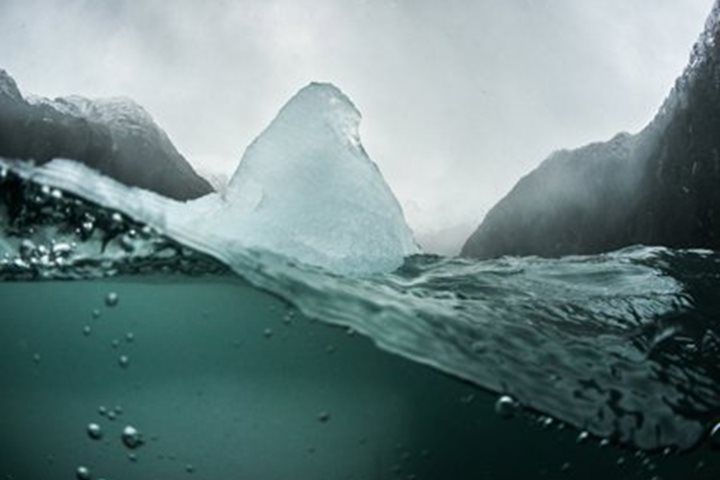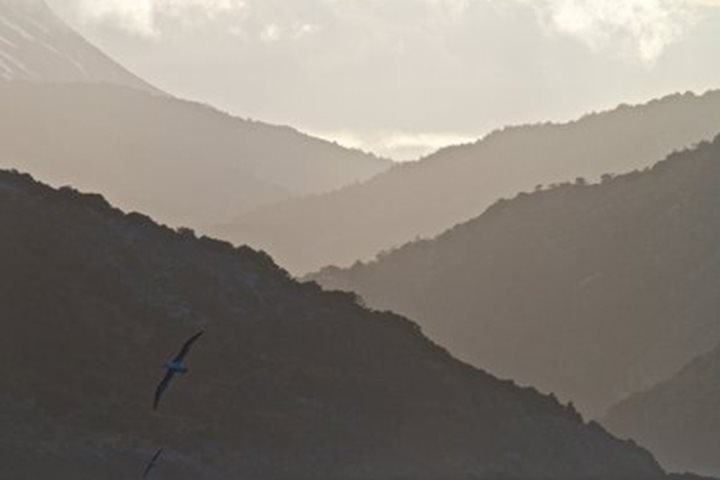We have officially entered the realm of Patagonia. Positioned 300 kilometers south of Rio Colorado, Patagonia’s northernmost boundary, we awoke to the glow of first light bathing the skyline of Puerto Madryn, the economic lifeline of Peninsula Valdes. Eager to take our first steps in this fabled region we boarded buses early, off on a day dedicated to watching whales and peering at penguins.
Peninsula Valdes is an anvil shaped extension of the Argentine coastline, 1,200 kilometers south of Buenos Aires via ship. Our morning drive took us east, along the spine of the peninsula until reaching a weathered sign reading: Estancia San Lorenzo. From here we followed dusty roads to lands end and the site of a small Magellanic penguin colony. Inconspicuous from their burrows, these 18-inch-tall, black-and-white seabirds are an unexpected sight when seen waddling through this thorny, flat grassland, many thousands of miles from the ice of Antarctica. Seemingly unfazed by our presence, the designated path took us within feet of some individuals. Many were on eggs, lying in the shade of their burrows while others strutted across the landscape, headed to or from sea: clean and shimmering for the latter, dusty and guano strewn for the former.
Back at Estancia San Lorenzo, a beautiful lunch of cured meats, cheese, lamb, and wine fueled us for the second half of our excursion. It was as if someone had handed us a basket of assorted meats and said, “This will get you through the day, now, go play. Have fun.” Who doesn’t love that?
Granted UNESCO World Heritage status as a marine sanctuary in 1999, Peninsula Valdes is known not only as a breeding ground for penguins, but for the endangered southern right whale as well. It is also the birthplace for a deeper understanding of whales as a species. Brought to the world’s attention by Dr. Roger Payne (USA), Puerto Piramides is nestled into the southern cradle of the peninsula and is where initial photo surveys of this heavily hunted population began. Carried out since 1971, the photographs helped track individual right whales based on their unique callosity patterns (raised skin patches characteristic of right whales) and has allowed researchers to monitor their lifecycles and distribution. With calm seas and warm weather we had a chance to take to local boats ourselves and observe these animals the same way researchers have since Payne’s era—via photography. It was quickly apparent why these 15 meter (45ft.) long whales were known not only as the “right” whale to hunt, but the “right” whale to study. Exceedingly interested in our presence, numerous mother/calf pairs were drawn to our vessels for a closer look. Slowly bobbing up and down with each salty breath, some lingered mere feet from the boats for upwards of 10 minutes, seemingly in search of interesting company. As if the presence of these gentle giants were not enough, a waning sun began to warm each exhalation, as well as the sedimentary headlands that line the coast of Puerto Piramides, leaving a lasting first impression of this dynamic region.







